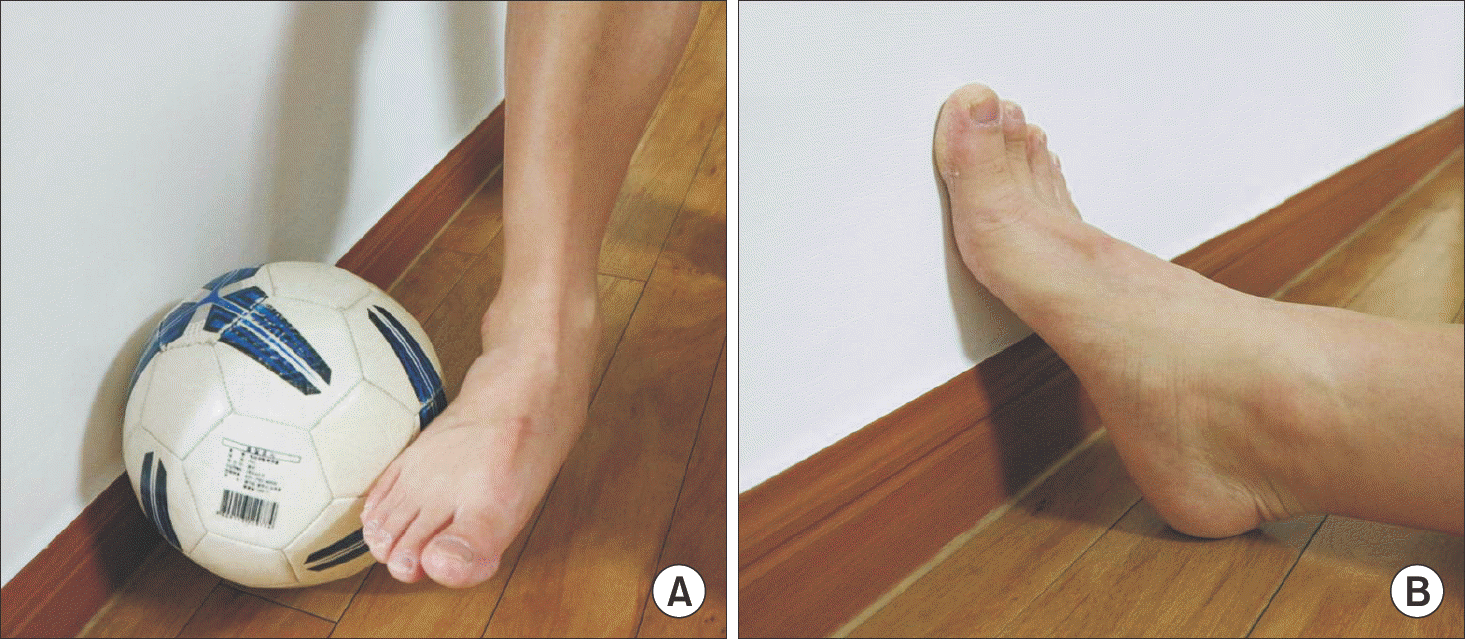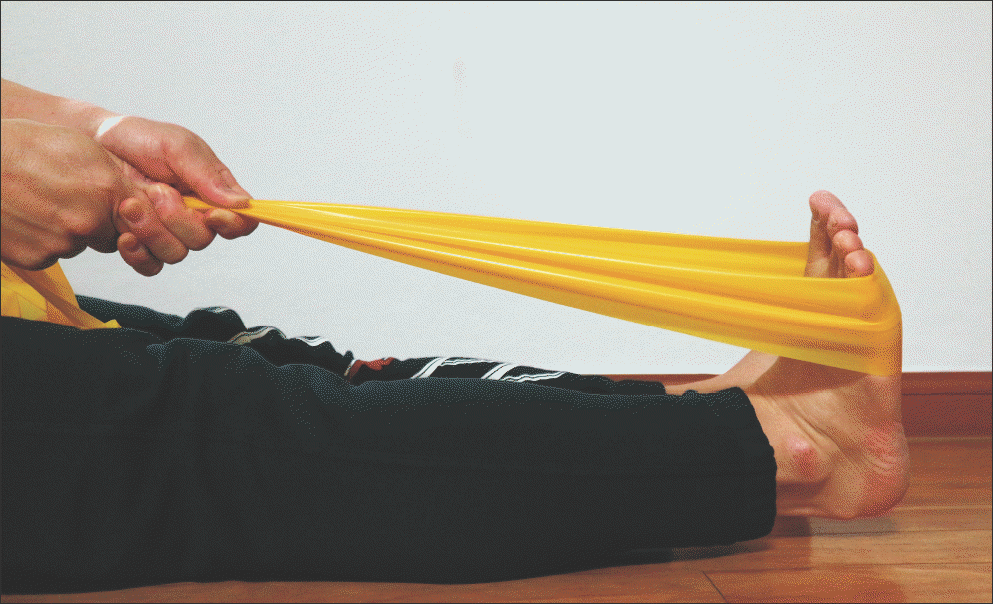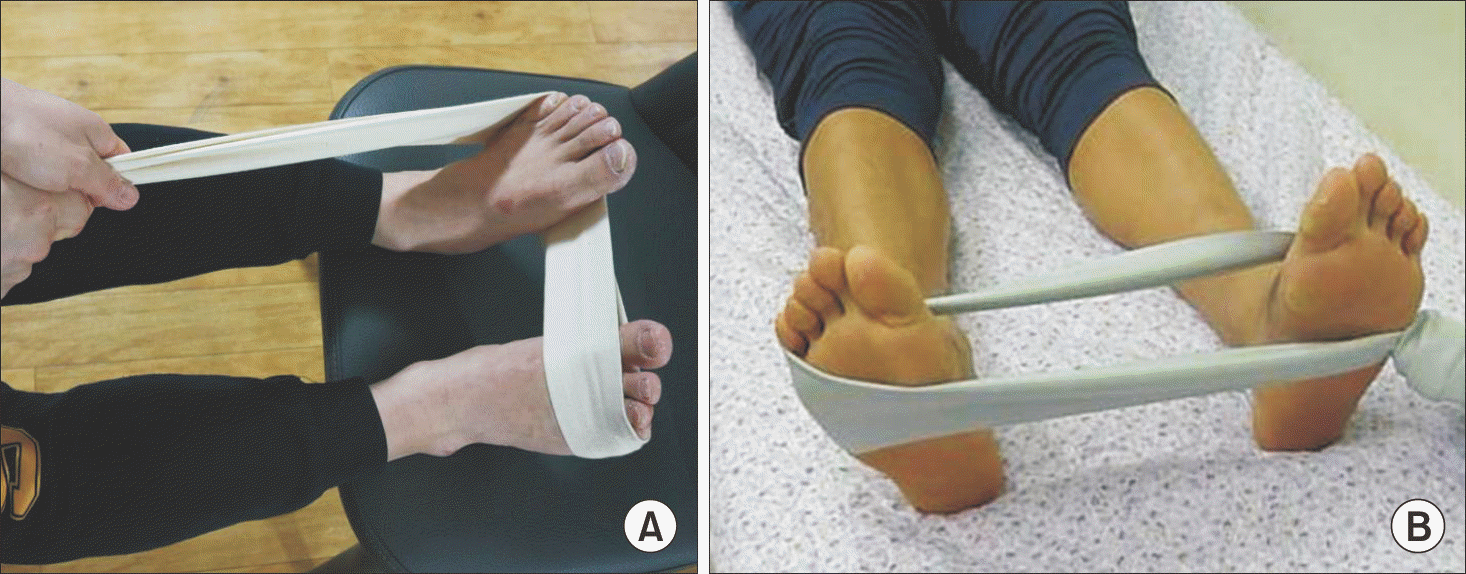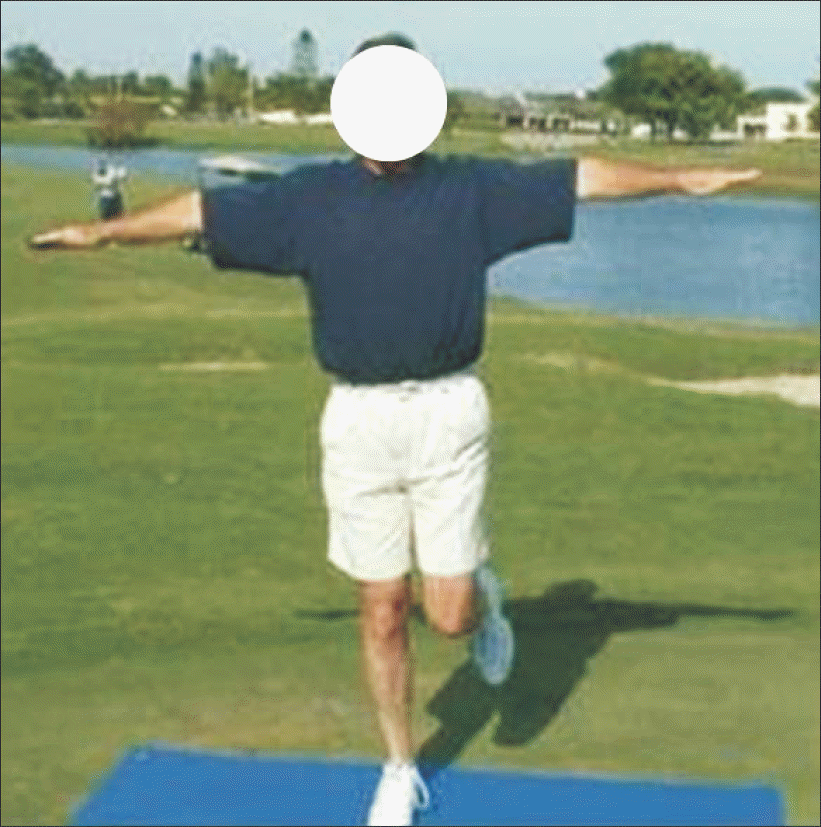Abstract
Acute lateral ankle sprain, which is the most common musculoskeletal injury, can be treated effectively with appropriate evidence-based initial care using PRICE (protection, rest, ice, compression, and elevation) and functional rehabilitation. Many systemic reviews reporting a high-level of evidence supporting the clinical usefulness and necessity of primary surgical repair for acute lateral ankle sprain have been insufficient. Regardless of the severity of ligament complex injuries, the surgical treatment for acute lateral ankle sprain without concomitant pathologies is not recommended and should be considered only in young professional athletes with complete ligament rupture (grade III) and severe instability.
Go to : 
REFERENCES
1.DiGiovanni CW., Brodsky A. Current concepts: lateral ankle instability. Foot Ankle Int. 2006. 27:854–66.

2.Waterman BR., Owens BD., Davey S., Zacchilli MA., Belmont PJ Jr. The epidemiology of ankle sprains in the United States. J Bone Joint Surg Am. 2010. 92:2279–84.

3.Kerkhoffs GM., Handoll HH., de Bie R., Rowe BH., Struijs PA. Surgical versus conservative treatment for acute injuries of the lateral ligament complex of the ankle in adults. Cochrane Database Syst Rev. 2007. 2:CD000380.

4.van den Bekerom MP., Kerkhoffs GM., McCollum GA., Calder JD., van Dijk CN. Management of acute lateral ankle ligament injury in the athlete. Knee Surg Sports Traumatol Arthrosc. 2013. 21:1390–5.

6.Hubbard TJ. Ligament laxity following inversion injury with and without chronic ankle instability. Foot Ankle Int. 2008. 29:305–11.

8.O’Neill PJ., Parks BG., Walsh R., Simmons LM., Miller SD. Excursion and strain of the superficial peroneal nerve during inversion ankle sprain. J Bone Joint Surg Am. 2007. 89:979–86.
9.Coughlin MJ., Saltzman CL., Anderson RB., Mann RA. Mann’s surgery of the foot and ankle. 9th ed.Philadelphia: Elsevier;2014.
10.Jacobson JA. Musculoskeletal sonography and MR imaging. A role for both imaging methods. Radiol Clin North Am. 1999. 37:713–35.
11.Cho JH., Lee DH., Song HK., Bang JY., Lee KT., Park YU. Value of stress ultrasound for the diagnosis of chronic ankle instability compared to manual anterior drawer test, stress radiography, magnetic resonance imaging, and arthroscopy. Knee Surg Sports Traumatol Arthrosc. 2016. 24:1022–8.

12.Balduini FC., Tetzlaff J. Historical perspectives on injuries of the ligaments of the ankle. Clin Sports Med. 1982. 1:3–12.

14.Jackson DW., Ashley RL., Powell JW. Ankle sprains in young athletes. Relation of severity and disability. Clin Orthop Relat Res. 1974. 101:201–15.
15.Clanton TO., Schon LC. Athletic injuries to the soft tissues of the foot and ankle. Coughlin MJ, Mann RA, editors. editors.Surgery of the foot and ankle. 7th ed.St. Louis: Mosby;1999. p. 1114–203.
16.Chan KW., Ding BC., Mroczek KJ. Acute and chronic lateral ankle instability in the athlete. Bull NYU Hosp Jt Dis. 2011. 69:17–26.
17.Kerkhoffs GM., Rowe BH., Assendelft WJ., Kelly KD., Struijs PA., van Dijk CN. Immobilisation for acute ankle sprain. A systematic review. Arch Orthop Trauma Surg. 2001. 121:462–71.
18.Smith RW., Reischl S. The influence of dorsiflexion in the treatment of severe ankle sprains: an anatomical study. Foot Ankle. 1988. 9:28–33.

19.Polzer H., Kanz KG., Prall WC., Haasters F., Ockert B., Mutschler W, et al. Diagnosis and treatment of acute ankle injuries: development of an evidence-based algorithm. Orthop Rev (Pavia). 2012. 4:e5.

20.Mehallo CJ., Drezner JA., Bytomski JR. Practical management: nonsteroidal antiinflammatory drug (NSAID) use in athletic injuries. Clin J Sport Med. 2006. 16:170–4.

21.van den Bekerom MP., Sjer A., Somford MP., Bulstra GH., Struijs PAA., Kerkhoffs GMMJ. Non-steroidal anti-inflammatory drugs (NSAIDs) for treating acute ankle sprains in adults: benefits outweigh adverse events. Knee Surg Sports Traumatol Arthrosc. 2015. 23:2390–9.

22.Petersen W., Rembitzki IV., Koppenburg AG., Ellerman A., Li-ebau C., Bruggemann GP, et al. Treatment of acute ankle ligament injuries: a systematic review. Arch Orthop Trauma Surg. 2013. 133:1129–41.

23.Kerkhoffs GM., van den Bekerom M., Elders LA., van Beek PA., Hullegie WA., Bloemers GM, et al. Diagnosis, treatment and prevention of ankle sprains: an evidence-based clinical guideline. Br J Sports Med. 2012. 46:854–60. or surgical approach? EFORT Open Rev. 2016;1: 34-44. 25. Seah R, Mani-Babu S. Managing ankle sprains in primary care: what is best practice? A systematic review of the last 10 years of evidence. Br Med Bull. 2011;97: 105-35.

26.Kerkhoffs GM., Rowe BH., Assendelft WJ., Kelly K., Struijs PA., van Dijk CN. Immobilisation and functional treatment for acute lateral ankle ligament injuries in adults. Cochrane Database Syst Rev. 2002. 3:CD003762.

27.Kerkhoffs GM., Struijs PA., Marti RK., Assendelft WJ., Blankevoort L., van Dijk CN. Different functional treatment strategies for acute lateral ankle ligament injuries in adults. Cochrane Database Syst Rev. 2002. 3:CD002938.

28.Kemler E., van de Port I., Backx F., van Dijk CN. A systematic review on the treatment of acute ankle sprain: brace versus other functional treatment types. Sports Med. 2011. 41:185–97.
29.Feger MA., Glaviano NR., Donovan L., Hart JM., Saliba SA., Park JS, et al. Current trends in the management of lateral ankle sprain in the United States. Clin J Sport Med. 2017. 27:145–52.

30.Jones MH., Amendola AS. Acute treatment of inversion ankle sprains: immobilization versus functional treatment. Clin Orthop Relat Res. 2007. 455:169–72.
31.Hubbard TJ., Aronson SL., Denegar CR. Does cryotherapy hasten return to participation? A systematic review. J Athl Train. 2004. 39:88–94.
32.Bleakley CM., McDonough SM., MacAuley DC., Bjordal J. Cryotherapy for acute ankle sprains: a randomised controlled study of two different icing protocols. Br J Sports Med. 2006. 40:700–5. discussion 705.

33.van den Bekerom MP., Struijs PA., Blankevoort L., Welling L., van Dijk CN., Kerkhoffs GM. What is the evidence for rest, ice, compression, and elevation therapy in the treatment of ankle sprains in adults? J Athl Train. 2012. 47:435–43.

34.Hubbard TJ., Denegar CR. Does cryotherapy improve outcomes with soft tissue injury? J Athl Train. 2004. 39:278–9.
35.Bleakley C., McDonough S., MacAuley D. The use of ice in the treatment of acute soft-tissue injury: a systematic review of randomized controlled trials. Am J Sports Med. 2004. 32:251–61.
36.Boyce SH., Quigley MA., Campbell S. Management of ankle sprains: a randomised controlled trial of the treatment of inversion injuries using an elastic support bandage or an Aircast ankle brace. Br J Sports Med. 2005. 39:91–6.

37.Beynnon BD., Renström PA., Haugh L., Uh BS., Barker H. A prospective, randomized clinical investigation of the treatment of first-time ankle sprains. Am J Sports Med. 2006. 34:1401–12.

38.Gwak HC., Seo SS., Kim CW. Nonoperative management of foot and ankle injury related to sports. J Korean Orthop Sports Med. 2004. 3:118–27.
39.Tully MA., Bleakley CM., O’Connor SR., McDonough SM. Functional management of ankle sprains: what volume and intensity of walking is undertaken in the first week postinjury. Br J Sports Med. 2012. 46:877–82.

40.Specchiulli F., Cofano RE. A comparison of surgical and conservative treatment in ankle ligament tears. Orthopedics. 2001. 24:686–8.

41.van den Bekerom MP., van der Windt DA., Ter Riet G., van der Heijden GJ., Bouter LM. Therapeutic ultrasound for acute ankle sprains. Cochrane Database Syst Rev. 2011. 6:CD001250.

42.Bennett M., Best TM., Babul S., Taunton J., Lepawsky M. Hyperbaric oxygen therapy for delayed onset muscle soreness and closed soft tissue injury. Cochrane Database Syst Rev. 2005. 4:CD004713.

43.Kannus P., Renström P. Treatment for acute tears of the lateral ligaments of the ankle. Operation, cast, or early controlled mobilization. J Bone Joint Surg Am. 1991. 73:305–12.

44.Pihlajamäki H., Hietaniemi K., Paavola M., Visuri T., Mattila VM. Surgical versus functional treatment for acute ruptures of the lateral ligament complex of the ankle in young men: a randomized controlled trial. J Bone Joint Surg Am. 2010. 92:2367–74.
45.Pijnenburg AC., Bogaard K., Krips R., Marti RK., Bossuyt PM., van Dijk CN. Operative and functional treatment of rupture of the lateral ligament of the ankle. A randomised, prospective trial. J Bone Joint Surg Br. 2003. 85:525–30.
46.Pijnenburg AC., van Dijk CN., Bossuyt PM., Marti RK. Treatment of ruptures of the lateral ankle ligaments: a meta-analysis. J Bone Joint Surg Am. 2000. 82:761–73.

47.Povacz P., Unger SF., Miller WK., Tockner R., Resch H. A randomized, prospective study of operative and non-operative treatment of injuries of the fibular collateral ligaments of the ankle. J Bone Joint Surg Am. 1998. 80:345–51.

48.Takao M., Miyamoto W., Matsui K., Sasahara J., Matsushita T. Functional treatment after surgical repair for acute lateral ligament disruption of the ankle in athletes. Am J Sports Med. 2012. 40:447–51.

49.White WJ., McCollum GA., Calder JD. Return to sport following acute lateral ligament repair of the ankle in professional athletes. Knee Surg Sports Traumatol Arthrosc. 2016. 24:1124–9.

50.Chaudhry H., Simunovic N., Petrisor B. Cochrane in CORR ®: surgical versus conservative treatment for acute injuries of the lateral ligament complex of the ankle in adults (review). Clin Orthop Relat Res. 2015. 473:17–22.
51.Kobayashi T., Gamada K. Lateral ankle sprain and chronic ankle instability: a critical review. Foot Ankle Spec. 2014. 7:298–326.
52.Frey C., Feder KS., Sleight J. Prophylactic ankle brace use in high school volleyball players: a prospective study. Foot Ankle Int. 2010. 31:296–300.

53.Bahr R., Bahr IA. Incidence of acute volleyball injuries: a prospective cohort study of injury mechanisms and risk factors. Scand J Med Sci Sports. 1997. 7:166–71.

54.Milgrom C., Shlamkovitch N., Finestone A., Eldad A., Laor A., Danon YL, et al. Risk factors for lateral ankle sprains: a prospective study among military recruits. Foot Ankle. 1991. 12:26–30.
55.Verhagen EA., van Mechelen W., de Vente W. The effect of preventive measures on the incidence of ankle sprains. Clin J Sport Med. 2000. 10:291–6.

Go to : 
 | Figure 2.Photographs of isometric peroneal strengthening exercise using a ball (A) and Achilles strengthening exercise against a wall (B). |
Table 1.
Clinical Classification of Lateral Ankle Ligaments Injury14)
Table 2.
Classification of Lateral Ankle Ligament Injury and Treatment Recommendations15)
Table 3.
Functional Rehabilitation Program after Acute Lateral Ankle Sprain
Table 4.
Clinical Outcomes after Surgical Treatment for Acute Lateral Ankle Ligament Injury
Table 5.
Recent Systemic Reviews regarding the Conservative and Surgical Treatments for Acute Lateral Ankle Sprain




 PDF
PDF ePub
ePub Citation
Citation Print
Print





 XML Download
XML Download